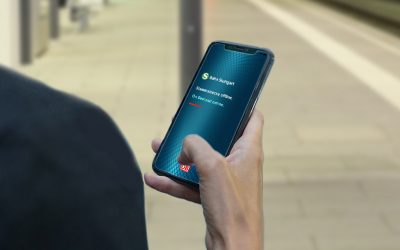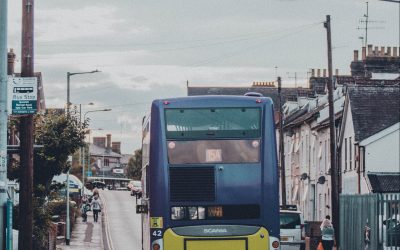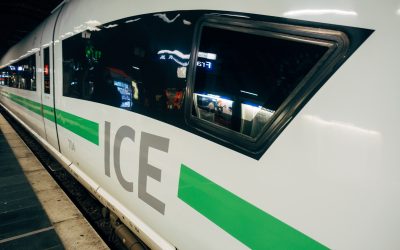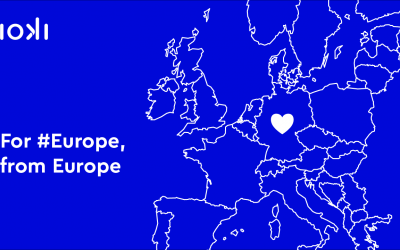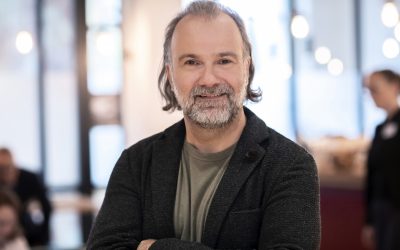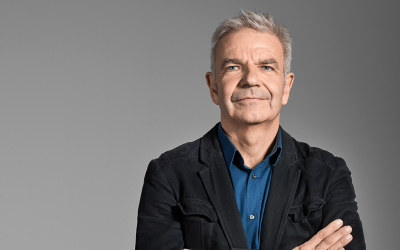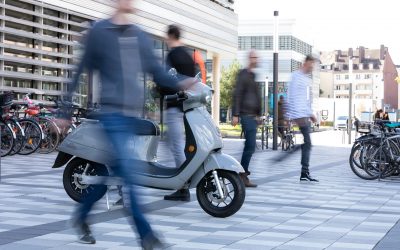Digital rail and on-demand rail replacement services
In Germany, up to 125 kilometres of rail are to be modernized by 2025. During the modernization, passengers will have to switch from rail to rail replacement services. This is also the case for passengers on the Stuttgart S-Bahn, while the main line there is being modernized this summer. Nevertheless, this rail replacement service is different, because: On weekends and weekend nights, it is main line offline – S-Bahn On-Demand online.
Perspectives from Alina Schuprin
As International Business Development Manager Alina Schuprin supports ioki’s mission to implement integrated mobility solutions not only on german roads, but all over Europe. Having a Master degree in industrial engineering Alina is experienced in anything that comes with digitalisation and its impact on established business areas. At ioki she combines this know-how with her personal goal to generate a positive impact on the environment with her daily work.
Great Britain’s Bus Market – Exploiting Potentials, Establishing Innovations
England’s national bus strategy, Bus Back Better, states that around 4.07 billion journeys were made by bus in England in 2019/20. This is more than double the number of journeys made by rail. Whether travelling to work, education or leisure, the bus is the UK’s number one public transport mode. However, not all that glitters is gold here either. Despite the high demand, there is room for improvement in terms of service quality, fares, capacity utilisation and efficiency of bus services. The outstanding fields that need to be tackled are primarily due to the deregulated market for bus services.
The future is green
The 150.7 million customer journeys made by Deutsche Bahn last year show that many people care about travelling sustainable. DB plays a major role in shaping the future of mobility in a climate-friendly way. In order to fulfil this role in line with requirements, our mother concern combines economy, social affairs and ecology aspects with each other.
Digital mobility solutions for Europe from Europe
The mobility transformation in Europe must be driven forward through modern, digital and inner-European platform solutions in order to create a real added mobility value. This added value can only be created through the development of holistic software solutions that enable public authorities and (transport) companies to integrate new forms of mobility across different modes of transport.
Perspectives from Jakob Kammerer
Jakob Kammerer is Head of Autonomous Mobility at ioki and thus responsible for developing the software that connects driverless vehicles with our operating system for digital mobility. After completing his B.Sc. in automotive engineering at the Technical University of Ilmenau in 2014, he progressed through several positions at Daimler, General Motors and the PSA Group into the field of mobility. Today we talk to Jakob about the supreme discipline of modern mobility: autonomous driving.
All aboard, please! Next stop: autonomous driving
ioki has already achieved a number of milestones in the field of autonomous driving, from test operations on closed terrain to linking an On-Demand-Booking-System with autonomous driving vehicles. In March 2021, the “Law on Autonomous Driving” was presented in the Bundestag, which clearly shows: The topic is gaining more weight not only among mobility designers, but also at the political level. In the bill presented, legal framework conditions were defined for fully automated driving in certain operating areas. In addition, further investments are to be made in research and development in the field to make the mobility of the future safer, more environmentally friendly and, above all, user centered. “Germany will be the first country in the world to bring autonomous vehicles out of the research labs and onto the road,” says Federal Minister Andreas Scheuer – ioki has already been working on this for several years and shows itself to be an innovator making progress here.
Perspectives from Jörg Starr
Jörg Starr has already passed through several stations in the automotive industry. He has already worked as a manager at Smart and Daimler. Today, the hydrogen mobility expert works for Audi. In addition, Jörg Starr is chairman of the Clean Energy Partnership (CEP). Technology, mineral oil and energy companies, gas producers and car manufacturers are working together to establish emission-free mobility with hydrogen and fuel cells across the board.
Why transport planning must be agile
Mobility is a highly complex construct, consisting of a wide variety of puzzle pieces and dependent on diverse influencing variables. Since the beginning of professional planning of publicly oriented mobility services, public transport authorities and transport companies have been confronted with a multitude of questions and possible answers.
Car-free city: meaningful reform or wishful thinking?
Looking at our society from a above perspective without any prior knowledge, it seems as if the idea of a planet with endless resources has strongly manifested itself in the minds of people. A prime example of this way of thinking is the current use of motorised individual transport. If I want to drive, I have a seat in my car, fill up the tank, fasten my seat belt, press the accelerator and drive off. This way of thinking is dangerous. Motorised individual transport requires that resources are consumed – for a car that weighs 1.5 tonnes on average, that means about 70 tonnes of material only in production. In addition, the car pollutes the environment with every use and takes up too much space, especially in large cities.
Perspectives from Prof. Peter Eckart
Prof. Peter Eckart studied product design at the Bergische Universität GHS Wuppertal and later at the Hochschule für bildende Künste Hamburg. In 2000, he founded the design studio unit-design, Frankfurt, Bern, together with Bernd Hilpert, with whom he also works for the Deutsche Bahn. Since 2000 Peter Eckart has been Professor of Integrative Design at the HfG Offenbach and since 2011 Vice President of the University. His central research field is mobility design. Since 2018, he has been leading the interdisciplinary LOEWE research project with Prof. Dr. Kai Vöckler in the fields of urban and transport planning, social science mobility research, multimedia technologies and the design entitled project-mo.de, which focuses on the role of design in changing mobility behaviour.
Green Fleet
Fleet management follows social and economic trends: New forms of work, digitization and the shift in values towards a greater understanding of sustainability are having an impact on the design of company-organized mobility. But what does this constant change in mobility structures mean for companies and where are the opportunities?

